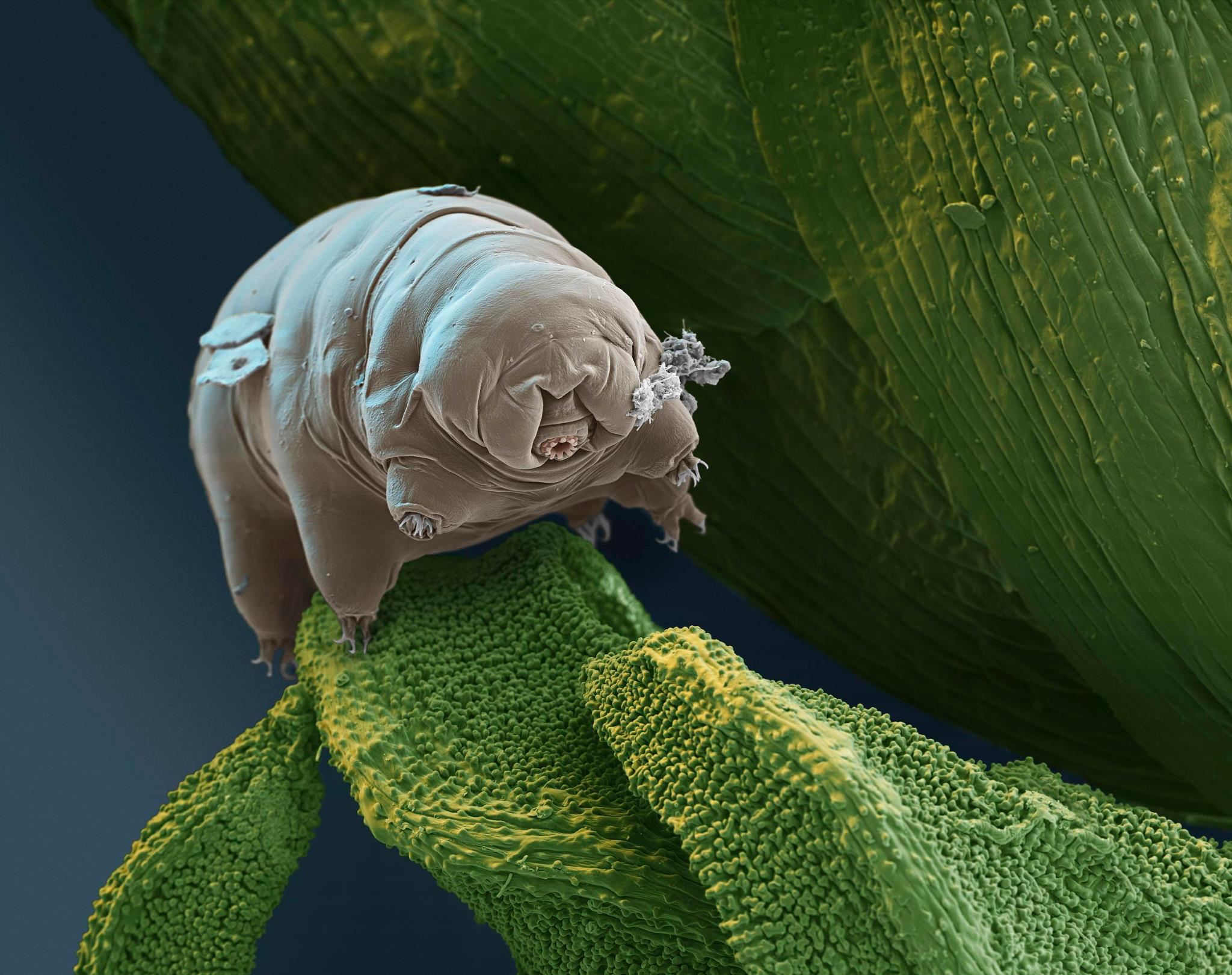Tardigrades are eight-legged miniature animals that prefer to live in moist, green moss. Because of its interesting way of walking and swimming, it has been nicknamed "Water Bear" and "Moss Piglet".

These little guys are usually only 0.1-0.5 mm long, and the largest species of adult insects can be up to 1.5 mm long and are visible to the naked eye if you have good vision.
Known for its tenacity
No animal on Earth is stronger than the tiny tardigrade tardigrade. Scientists have long discovered that tardigrades are ubiquitous in Earth's biosphere.
Tardigrades have survived five mass extinctions on Earth, and no matter what the environment, as long as liquid water exists, tardigrades can be found – from the top of the Himalayas at the top of the world, to the deep sea trenches, from volcanoes and tropical rainforests to the icy north and south poles.
So humans began to try to push the limits of tardigrades.
Tardigrades have almost no limits. They can survive temperatures close to absolute zero at temperatures of -272°C, be exposed to the vacuum of outer space for days unscathed, and think about what to eat tomorrow for breakfast in X-ray irradiation 500 times more lethal than humans...
In other words, such creatures could tolerate conditions that simply do not exist on Earth.
Tenacious secrets
This otherworldly toughness makes people can't help but want to understand how tardigrades do it.
Can humanity do the same for themselves in coping with the harsh test that is bound to come – the journey to open up space colonies?
According to the logic of evolution, the strength of tardigrades undoubtedly comes from adapting to the environment. But what is there to adapt to living in a comfortable, soft, cool, moist moss?
The mossy world will dry up and destroy.
Losing water is fatal to the vast majority of organisms, and it's easy to understand — cell membranes wrinkle and rupture. Further, without water molecules, a large amount of peroxide is produced in the organism, crushing DNA, similar to the feeling of radiation roast meat.
However, when the mossy world is destroyed and tardigrades lose the water necessary for physical activity, its cells spew out several strange proteins that differ from other animals, buffering and protecting cell membranes.
As the water disappears, these proteins assemble themselves into long, crisscrossing fibers that fill the cell's interior and support cell membranes and proteins, preventing them from breaking and breaking up.
Among them, it is worth mentioning that tardigrades also make a protein called a "damage inhibitor" that binds directly to DNA to form a set of "king eight shells" that physically protect DNA.
How strong is this shell, refer to Sun Monkey flipping his head in the alchemy furnace of Taishang Laojun, the tardigrade can withstand extremely hot temperatures of up to 420K for a few minutes. (Here is a bit of a title party scare meaning, 420K is said to be Kelvin temperature 420 degrees, replaced by Celsius temperature, is 147 ° C.....) But it's also very strong [sneaky laughs])
The journey is the Sea of Stars
Tardigrades evolve this magical strategy in order to survive the destruction of their green world.
And when the surface of the earth is not suitable for survival, human beings always want to escape.
Just like the ancients mythologized Chang'e running to the moon, no matter what, the colonization of outer space will definitely be realized and inevitable. Until then, learning and imitating tardigrades will certainly help humans conquer the Sea of Stars.
For example, genetically modified food crops, fungi, and pollinators to produce tardigrades unique to damage inhibition proteins that allow them to grow and survive in the harsh conditions of space and other planets.
It's not science fiction, and scientists have even inserted genes for tardigrades' unique damage-suppressing proteins into human cells in the lab!
These genetically modified cells survived X-rays and chemicals that killed ordinary cells— a self-destructing procedure of apoptosis that was successfully suppressed by tardigrades' proteins!
"Inspired by ExtremeLy Tolerant Organisms, Natural and Designed Proteins Can Form Cohesives and Attenuate Apoptosis in Human Cells," ACS Synthetic Biology, Vol. 11, February 18, 2022, p. 1292
Write at the end
No matter how close destruction is, no matter how far hope is, life will always find a way. Let's see how the human species continues our great and small every day.
The author thanks you for your attention (¬_¬)